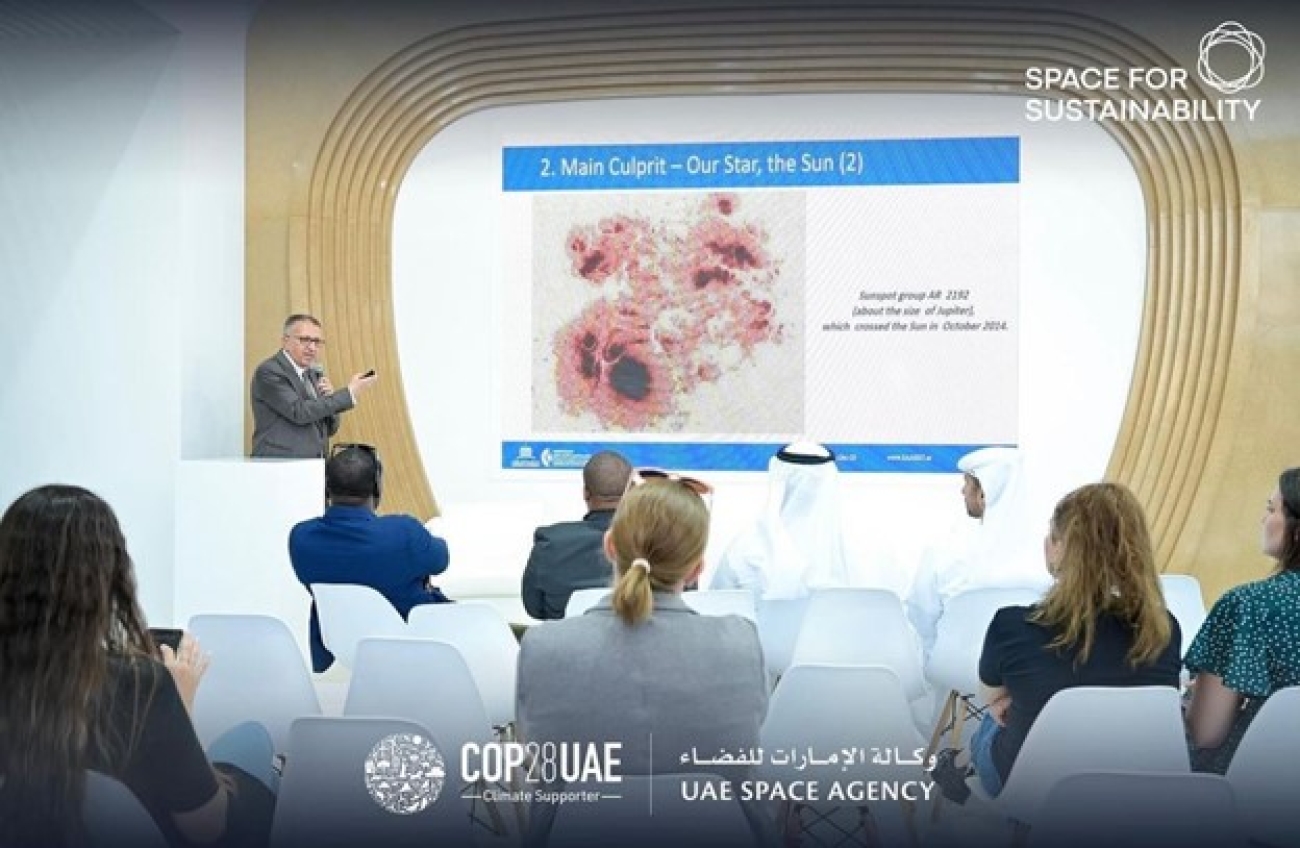The presentation was given on Dec. 06, 2023.
Space weather describes events that happen in space, which can disrupt modern technologies. It comes in different forms and different strengths like weather on planet Earth. It refers to the environmental conditions in space as influenced by the dynamic activity of the Sun and its effects on various celestial bodies, including our home planet, Earth. One of the primary factors governing space weather is the 11-year solar cycle, during which the Sun undergoes a periodic variation in its magnetic activity and sunspot numbers. This cyclical pattern allows scientists to predict when space weather effects will likely be most severe. The Sun, the main culprit in this celestial drama, exhibits a fascinating array of phenomena driven by its differential rotation. Sunspots, dark areas on the solar surface associated with intense magnetic activity, follow this cycle and play a crucial role in space weather. Solar flares, sudden and severe bursts of energy, prominences, and large loops of gas extending from the Sun's surface are manifestations of the Sun's dynamic behavior. The solar wind, a continuous stream of charged particles from the Sun, is another key player in space weather effects. Coronal Mass Ejections (CMEs), massive expulsions of solar material and magnetic fields into space, can profoundly impact Earth's magnetosphere when directed towards our planet. Understanding these phenomena is crucial for predicting and mitigating potential hazards to space-based technologies, communication systems, and even power grids on Earth, as intense space weather events can lead to disruptions and damage. The interdisciplinary field of space weather research continues to evolve, leveraging advancements in observational and computational capabilities to enhance our understanding of the Sun's influence on the dynamic space environment and its implications for our interconnected technological society.
Prof. Ilias Fernini also presented the ambitious strides in space weather mitigation through the visionary initiative of the Sharjah Academy for Astronomy, Space Sciences, and Technology. He unveiled a comprehensive program to bolster our understanding and preparedness for space weather phenomena. The CubeSat Lab is at the forefront of this initiative, a pioneering venture to advance satellite technology and research. Central to this endeavor is the imminent launch of the Sharjah-Sat-3 CubeSat, equipped with a cutting-edge solar particle detector (SPD) designed to scrutinize and analyze solar radiation. The lecture also shed light on the academy's Optical Observatory, a state-of-the-art facility devoted to monitoring sunspots, crucial indicators of solar activity. In addition, Prof. Fernini detailed the significance of the Decametric Radio Telescope, an instrumental component in tracking and reporting solar radio bursts, providing invaluable data for space weather forecasting. The Space Weather Laboratory, another integral facet of the program, was highlighted for its role in diligently monitoring ionospheric scintillations during magnetic storms, contributing to a deeper understanding of space weather dynamics. Prof. Fernini's lecture showcased the Sharjah Academy's unwavering commitment to pushing the boundaries of space science and technology, reinforcing its pivotal role in advancing global efforts to mitigate the impact of space weather.



